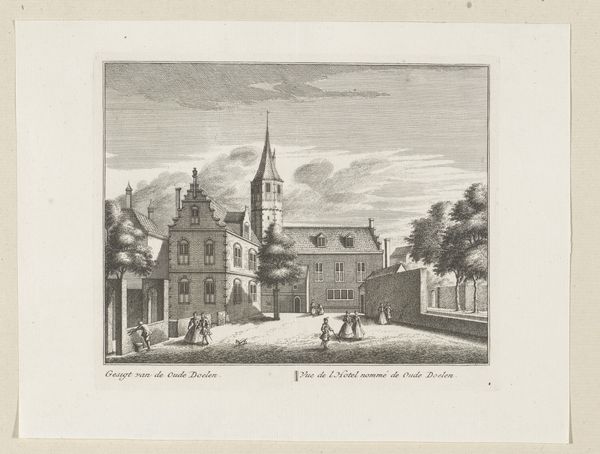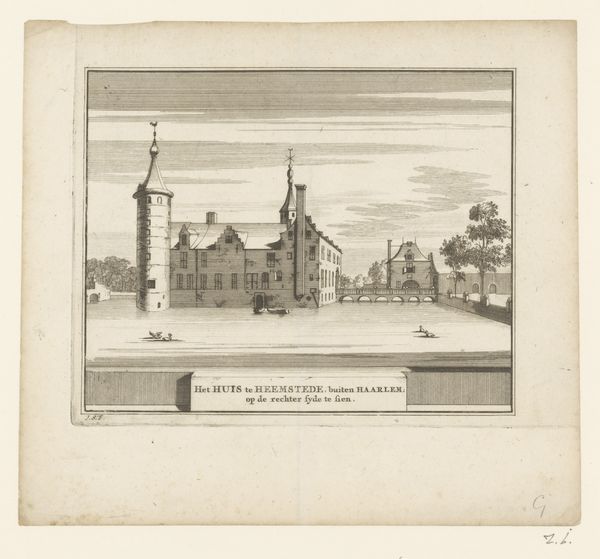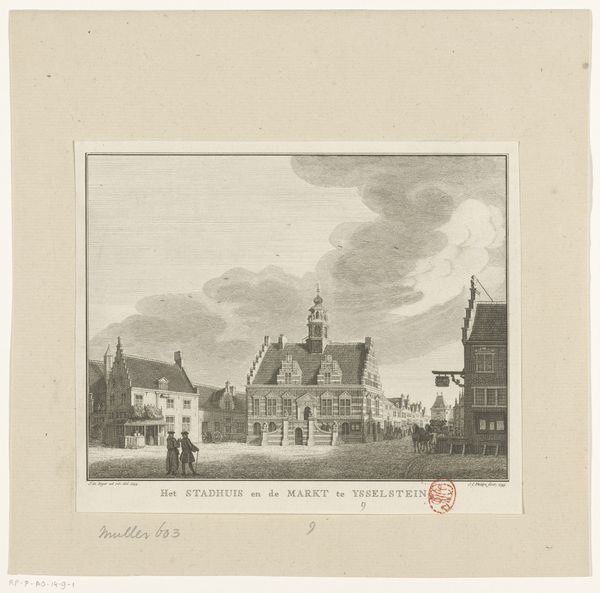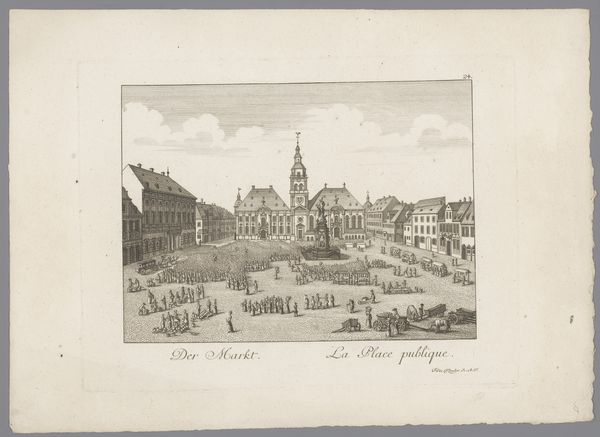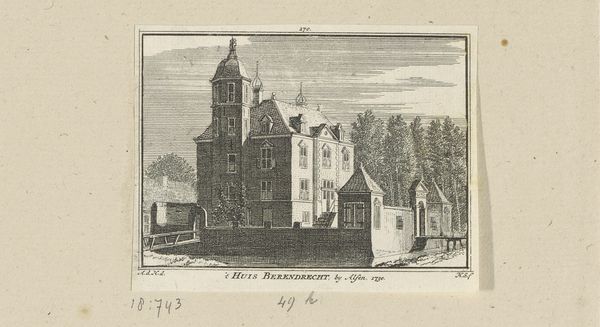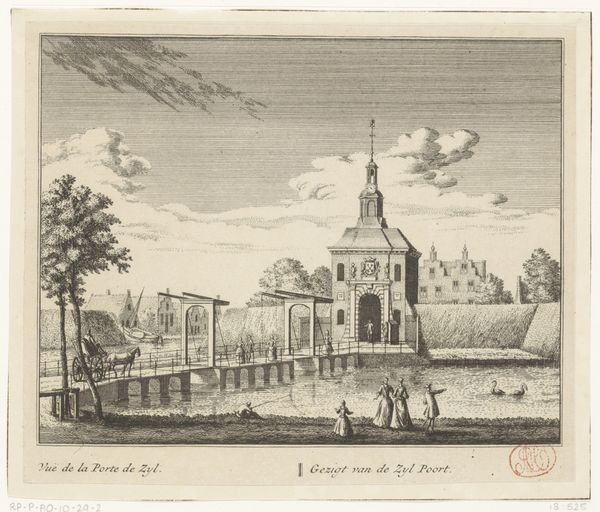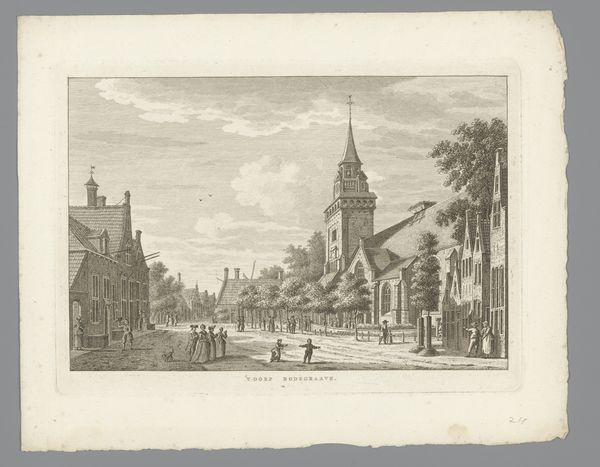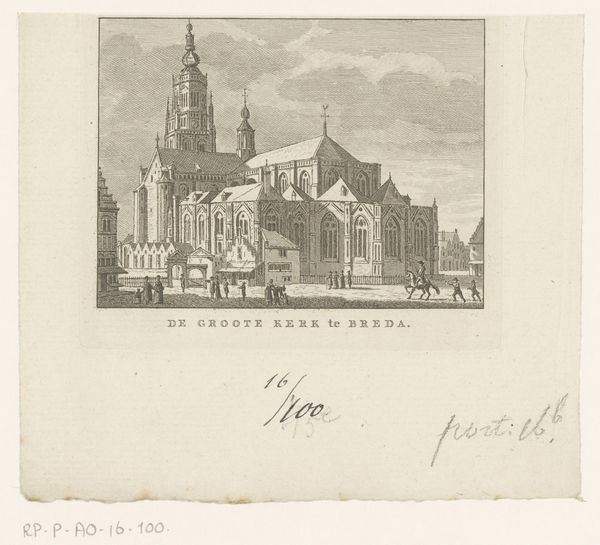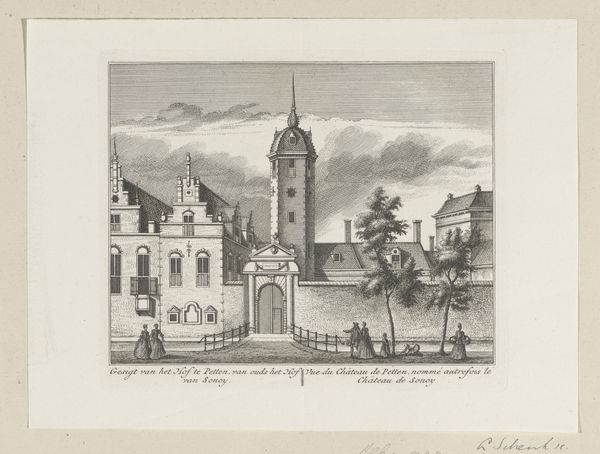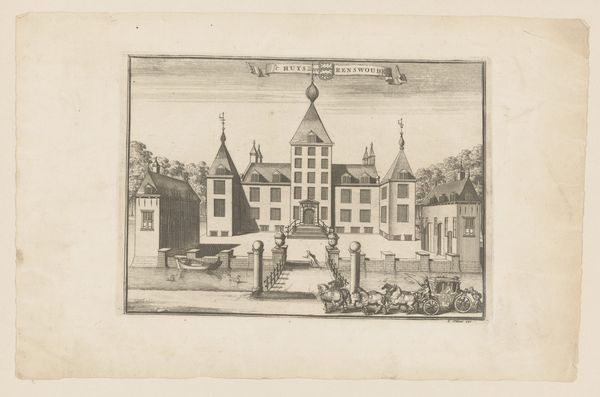
graphic-art, print, paper, engraving
#
graphic-art
#
baroque
#
ink paper printed
# print
#
paper
#
cityscape
#
engraving
Dimensions: height 110 mm, width 109 mm
Copyright: Rijks Museum: Open Domain
Curator: Looking at Leonard Schenk’s print, titled “Gezicht op het Accijnshuis te Alkmaar,” dating from around 1736, what immediately strikes you? It's rendered with such precision. Editor: My initial impression is one of a quiet, almost dreamlike quality. The delicate lines and shading create a sense of stillness. There's an understated elegance about it. Curator: That's beautifully put. The engraving captures a cityscape in Alkmaar, focusing on the Accijnshuis, which was essentially the excise house – where taxes were collected on goods. The building dominates the view, doesn’t it? Editor: Absolutely, it centers not just the composition, but also the story. This building embodies the financial machinery of the Dutch Republic. Considering that period, and those tax levies, were those burdens distributed evenly, do you think? I'm guessing not, since trade and tax policies then, like now, reflected complex power dynamics. Curator: I am sure not. It would be amazing to explore the politics and administration behind buildings like that one, to think about trade policies through this building alone. But thinking of its presence in this picture... Schenk gives a certain monumentality to it, yet it doesn't feel oppressive. The surrounding scene feels so serene, doesn’t it? People going about their daily business. It feels surprisingly peaceful given what that building means. Editor: And the contrast between the imposing structure and the everyday figures becomes particularly interesting. People under the bridge to the left seem to transport goods, while people seem to mind their business next to the tax building. Curator: I love how he uses light and shadow, don't you? Notice the way the sunlight seems to catch the side of the Accijnshuis and the architectural details. It makes me feel almost as though I was there. Editor: It’s a moment frozen in time, and with such detail, it provides an extraordinary glimpse into that era. Thinking about class, economy, urban life – it is like opening a portal to 18th-century Alkmaar! Curator: Yes, it reminds us how artworks are often products and active players in a historical process. Well, this has given me a lot to ponder about perspective and its own sort of subtle activism. Thank you for pointing those perspectives out. Editor: Likewise! Considering art as both record and instigator changes how we engage with the past, doesn't it? I leave more energized to think how it might shape our future too.
Comments
No comments
Be the first to comment and join the conversation on the ultimate creative platform.
